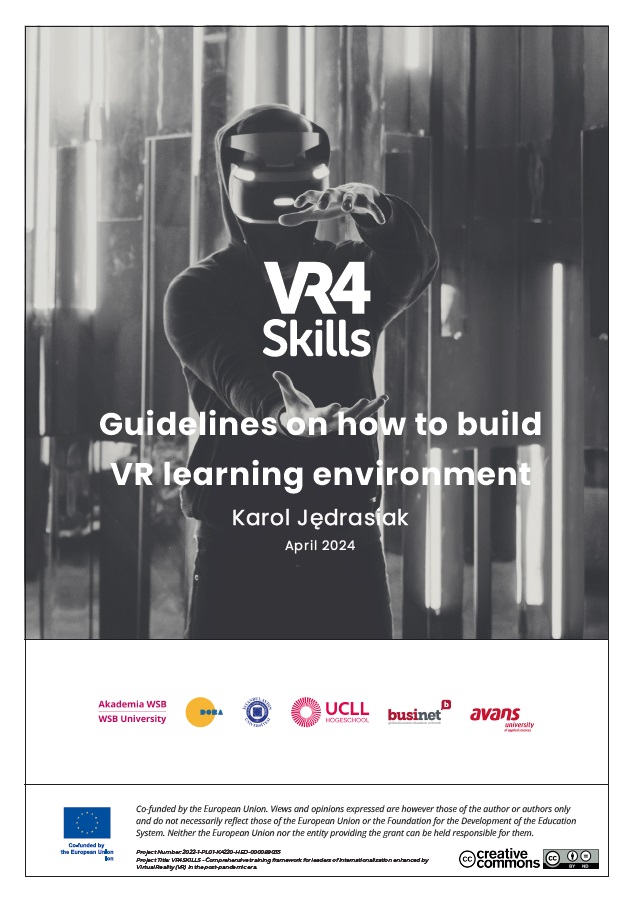- Student
- Student
- News
- Business School
- Doctoral School
- International Dean’s Office
- International Cooperation Office
- Academic Career Office
- Academic Sports Association
- Library
- Student Groups
- Internships
- Electronic Examination Center
- Scholarship office
- Finance Department
- Your Stay in Poland
- Academic Schedule
- The Centre for People with Special Needs
- Alumni and Students Association
- Personal Student Profile
- Support Zone
- Virtual University
- Contact
- Individual Study Plan
- Admissions
- Admissions
- Research
- University
- Erasmus+
Guidelines Released for Building VR Learning Environments - April 2024
The comprehensive "Guidelines on How to Build VR Learning Environment," is now available. This pivotal document outlines a robust framework for designing and implementing Virtual Reality (VR) educational tools tailored for immersive training experiences.
The guidelines emphasize the following key aspects:
- Purpose-Driven Design: Scenarios must be designed to align with specific educational goals, incorporating interactive theories to simulate realistic problem-solving situations.
- Realism and Interactivity: The guidelines stress creating lifelike VR environments through photorealistic 3D models and non-linear paths that foster engagement and skill retention. Interaction methods, such as gaze-based selection or controller input, are tailored to different VR immersion levels.
- Scenario Development Process: Planning involves defining narratives, objectives, and scene graphs for logical flow. Real-world elements such as props, characters, and triggers are incorporated to enhance immersion. Feedback mechanisms and evaluation metrics are included to assess user performance.
- Accessibility and Adaptability: Scenarios are designed to cater to diverse user groups, accommodating varying skill levels with multilevel designs and intuitive interaction.
- Iterative Development and Testing: Developers are encouraged to involve end-users in iterative testing cycles to refine scenarios and ensure their educational impact.
These guidelines are a part of the VR4SKILLS project, which aims to advance VR-driven training methodologies, particularly for leaders in internationalization post-pandemic era.

To download visit Deliverables section or vr4skills.eu